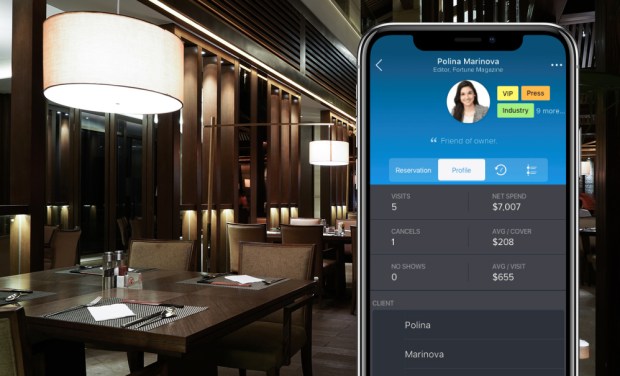The Data-Driven Guest Experience

When it comes to delivering a personalized, pleasant experience, the goals of consumers and hospitality operators are completely aligned.
Consumers want a great experience – and when they have one, they are inclined to spend more and frequent that establishment more often. Operators – from hotel chains to bars and restaurants to sports arenas – want them to have that great experience, for that reason.
But just because consumers and operators are in violet agreement, says SevenRooms’ CEO Joel Montaniel, doesn’t mean that it’s possible for operators to give the consumers what they want.
“All consumers want as personalized an experience as possible – but that means something different for everyone,” Montaniel said.
“The connective tissue that actually makes it possible for operators to deliver thousands of permutations on those personal experiences is data.”
And that’s the problem. Although restaurateurs and hoteliers are skilled in a variety of things when it comes to making their guests happy, data science is not often on the list. Montaniel explained that in the history of hospitality, no one ever opened a restaurant because they were hoping to spend a lot of time figuring out the best guest data streams to sift through, how to examine that data – now coming to them in a variety of formats and channels – and how to synthesize it into a single stream of actionable information.
SevenRooms is trying to help with a technology platform that enables the hospitality industry to better understand their customers’ preferences, right down to having their favorite red wine stocked in the hotel mini bar.
“Our goal is to create a vehicle that can provide that data to an operator, and then empower the operator to use that data to build the best experience for their best customers, however they choose to define that,” Montaniel explained.
Finding The Data
The problem that the industry faces, Montaniel noted, is that it’s hard for the operators to aggregate that data, which now comes from the many channels that represent the many consumer touchpoints along their journey. As a result, operators often rely on what’s easiest for them to access, such as the notes someone remembered to log the last time the guest was in the hotel, overlooking many important data streams and sources of insight about consumer preferences.
The first, most obvious and most easily overlooked channel is actually the guests themselves. Sometimes, Montaniel pointed out, the best way to give people what they want is to simply ask them, or just give them the opportunity to easily tell the establishment about their preferences.
Among the SevenRooms platform’s benefits is the capability for customers to easily add data to their initial bookings, so the venues can be alerted to things like allergies or other food preferences long before they walk through the front door.
Montaniel noted there is also a good deal of information that consumers are happily sharing on social media platforms – the same platforms they often use to sign and book reservations.
“If an establishment looks at someone who signs into a reservation using Facebook credentials, we are able to pull information from that consumer’s social profiles – simple things like when their birthday is – and same with the establishment.”
Montaniel said that such data can be combined with the point-of-sale data on customers’ past interactions with the brand, where operators can learn things like their preferred orders or price point. This gives the operator more information on the consumer from the moment they land on their site.
The SevenRooms platform takes inputs from all of those data sources and aggregates them into a single consumer profile, giving operators greater, broader visibility into their customer’s preferences – and much more visibility into what can be gleaned from the notes section that older systems provided. And, thanks to the point-of-sale integration, the sommelier at the hotel restaurant knows their guests’ favorite wines, the general manager knows what types of appetizers and desserts they like, and given the social data, also know if it a guest’s anniversary or birthday.
The Customer In Wider Context
As SevenRooms has grown up, so have the brands with which it works. And with that has come the challenge of offering profiles that will follow the customer as they move from one point to another in a single system. The latest SevenRooms capability is sharing the customer profile with other touchpoints at that brand. If a guest checks in in at the hotel’s front desk, then goes to eat at the hotel restaurant, the restaurant already has information on the guest who just checked in.
“Even things as simple as putting a bottle of the Cabernet Sauvignon you prefer in your room at check-in, as opposed to whatever their standard amenity is.”
As of now, that data sharing feature only work across affiliated brands, but Montaniel noted that could change in the future.
“We think there could be a future opportunity to think creatively about how that data could be shared in a way that gives both consumers and restaurants control over how they want to share and interact with the data,” he said. “And I think that could be used to create a better experience for everyone.”
